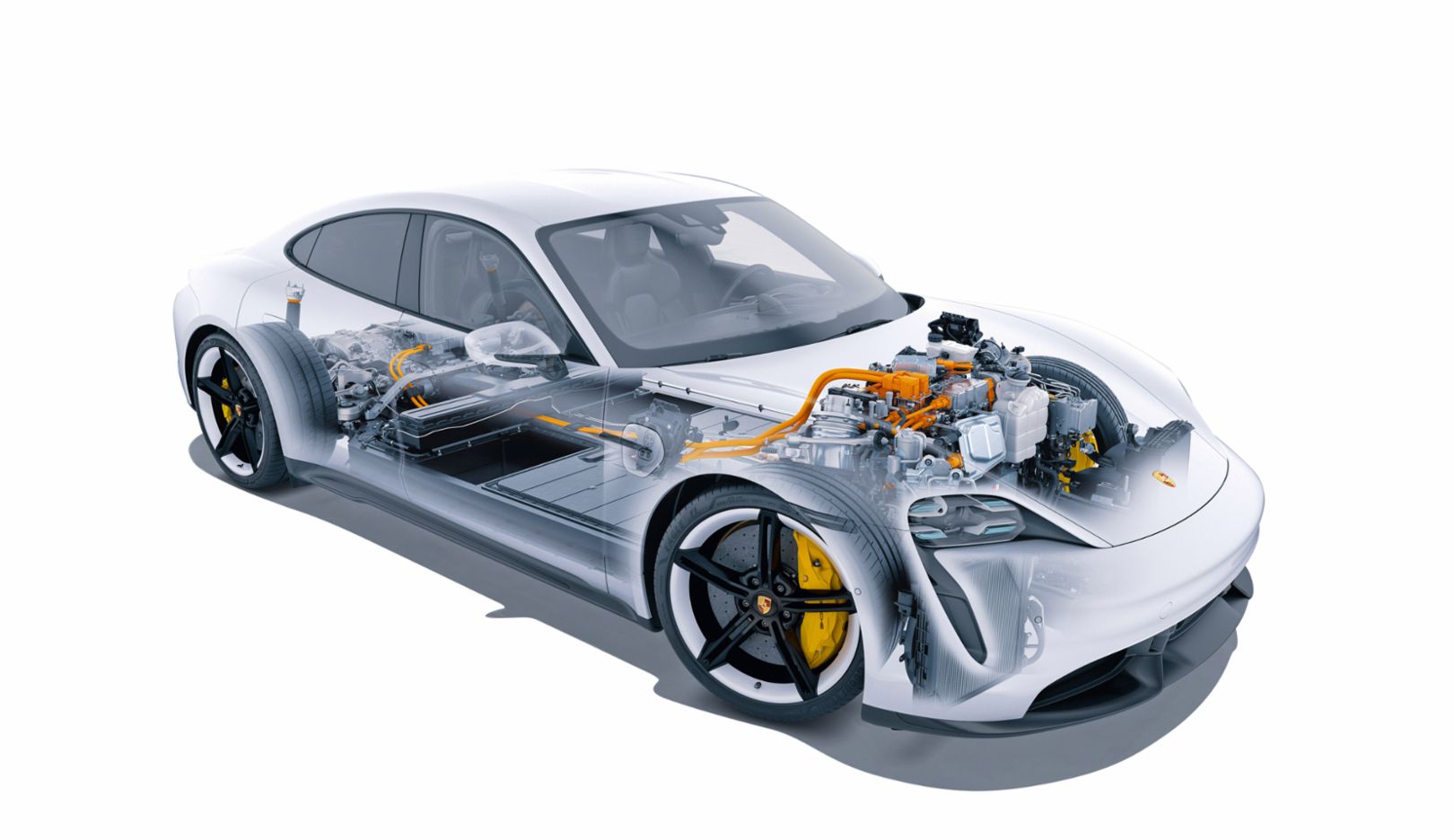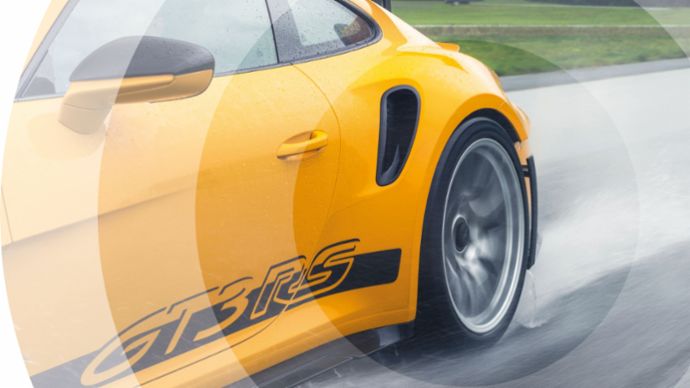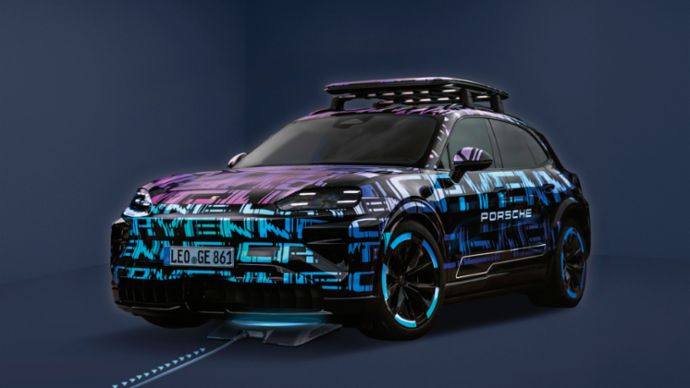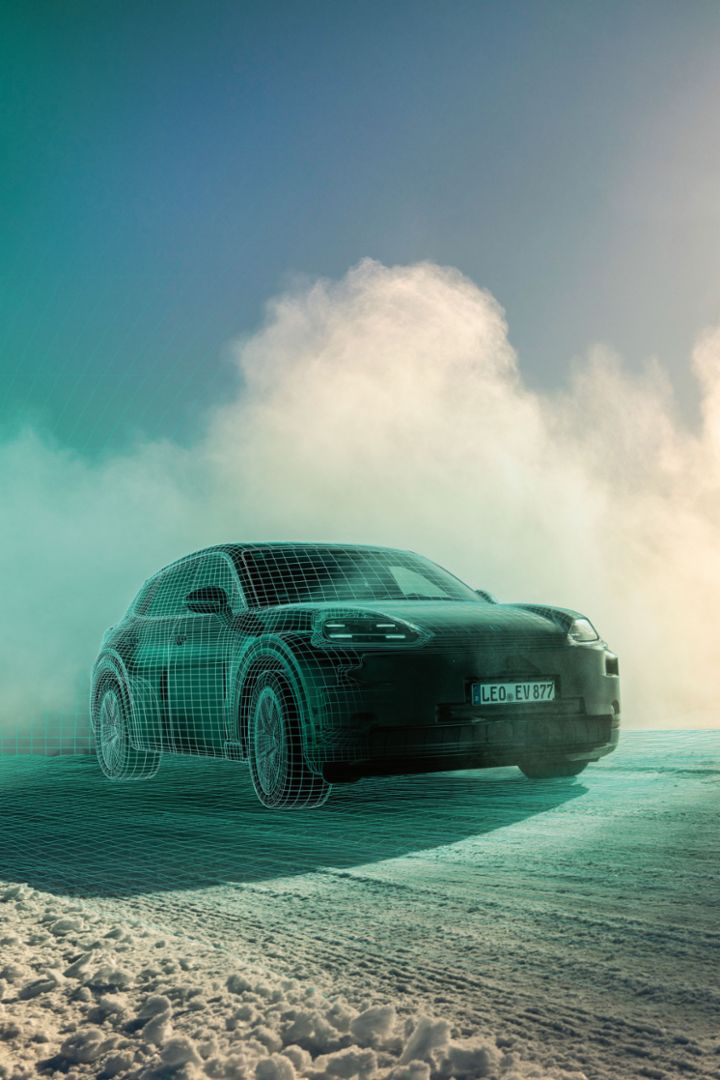The Sound of the Taycan
You can recognize a Porsche blindfolded, even if it’s an all-electric model. What makes the sound so special?
For drivers of a classic Porsche 356, the rattling, purring, and hissing of the early air-cooled boxer engine are music to their ears. Generated from a mechanical orchestra of pistons and valves, timing chains and rocker arms, intake and compression, combustion and exhaust. A sound that has become a benchmark of the brand over generations.
-
Porsche 356


Abstract audio:
The sound of the Porsche 356 was composed at full speed.Electric mobility has made the instruments of this orchestra a thing of the past, replacing them with the soft hum of electric motors. But emotion and information remain, as Porsche has composed a tapestry of sound for the Taycan over the years that is both new and yet characteristic of the brand. “No other manufacturer has spent as much time working on the sound both inside and out as Porsche,” says Tobias Hillers. He and his colleagues in the Sound and Concepts team have been developing the Taycan’s acoustics since 2015. “We have known for a long time that you need to be able to hear electric cars. For safety reasons,” he adds.
The EU approved a regulation regarding the use of an acoustic alert system for electric cars in 2014 and revised it in 2019. The so-called acoustic vehicle alerting system (AVAS) is designed to protect other road users and must remain active up to a speed of 20 kmh. There’s something similar in China and Japan, and the comparable regulation in the US goes even as far as requiring a warning sound when the stationary vehicle is about to move and an increase in the sound level up to a speed of 32 kmh.
The acousticians in Weissach transformed the requirement into a special feature. While certain sound components and volume are legally stipulated, they created a special Porsche sound that is characteristic, sporty, and powerful. It’s also worth mentioning that, like the 356 and 911, the Taycan provides the driver with clear feedback. Experiences with the Porsche 919 Hybrid confirmed how important the vehicle’s audible responses are. The works drivers trained in a simulator behind the wheel of the three-time Le Mans champion and were faster when the race car provided them with acoustic feedback on the driving situation.
-
Porsche Taycan

S is for sound:
The Porsche Taycan’s voice is an authentic composition of real vehicle sounds.While all-electric vehicles are quieter, they’re not silent. The sound of the tires on the road and the humming of the transmission and motors are no less informative than the sound of an internal combustion engine. Inspired by this backdrop of sounds, the sound designers developed the voice of the Taycan. Nothing is generated artificially: “The sound has to fit the vehicle and be authentic,” emphasizes Hillers. “We incorporate the components that sound really good. Then we filter out less attractive sounds. Anything that sounds like a dentist’s drill or streetcar has to go.”
What sounds so simple was actually a complicated development process. “We once spent three weeks hunkered down at our Nardò Technical Center in Italy creating sounds and trying them out on the test tracks there,” explains the engineer. The acousticians also spent countless hours creating the foundation of Porsche Electric Sport Sound at the soundproof laboratory of the Porsche development center in Weissach. In addition to their own sense of hearing, they also relied on a special artificial head for binaural listening, which is spatial listening with two ears. The ear turned toward the source of the sound perceives the sound earlier and more clearly than the other. The human sense of hearing is so sensitive that it can detect delays of up to 0.00001 seconds and, beginning at a certain pitch, differences in sound pressure of one decibel. With the artificial head, the acousticians can simulate any position inside and outside of the vehicle.
The results are promising: Porsche Electric Sport Sound is an entirely innovative sound experience. Emotional rather than obtrusive, but present and unmistakable. “Just the right kick requires the right sound,” explains Tobias Hillers.
The acoustic experts in Weissach develop individual sound concepts for each generation of engine, providing every Porsche model with its very own acoustic calling card. Experience the different sounds with a large selection of audio examples, from the 356 to the Taycan.
-
Porsche 356
-
Porsche Taycan
-
Porsche 550 Spyder
-
Porsche 911 RSR (2015)
-
Porsche 918 Spyder
-
Porsche 928 GTS
-
Porsche 936
-
Porsche Carrera GT




